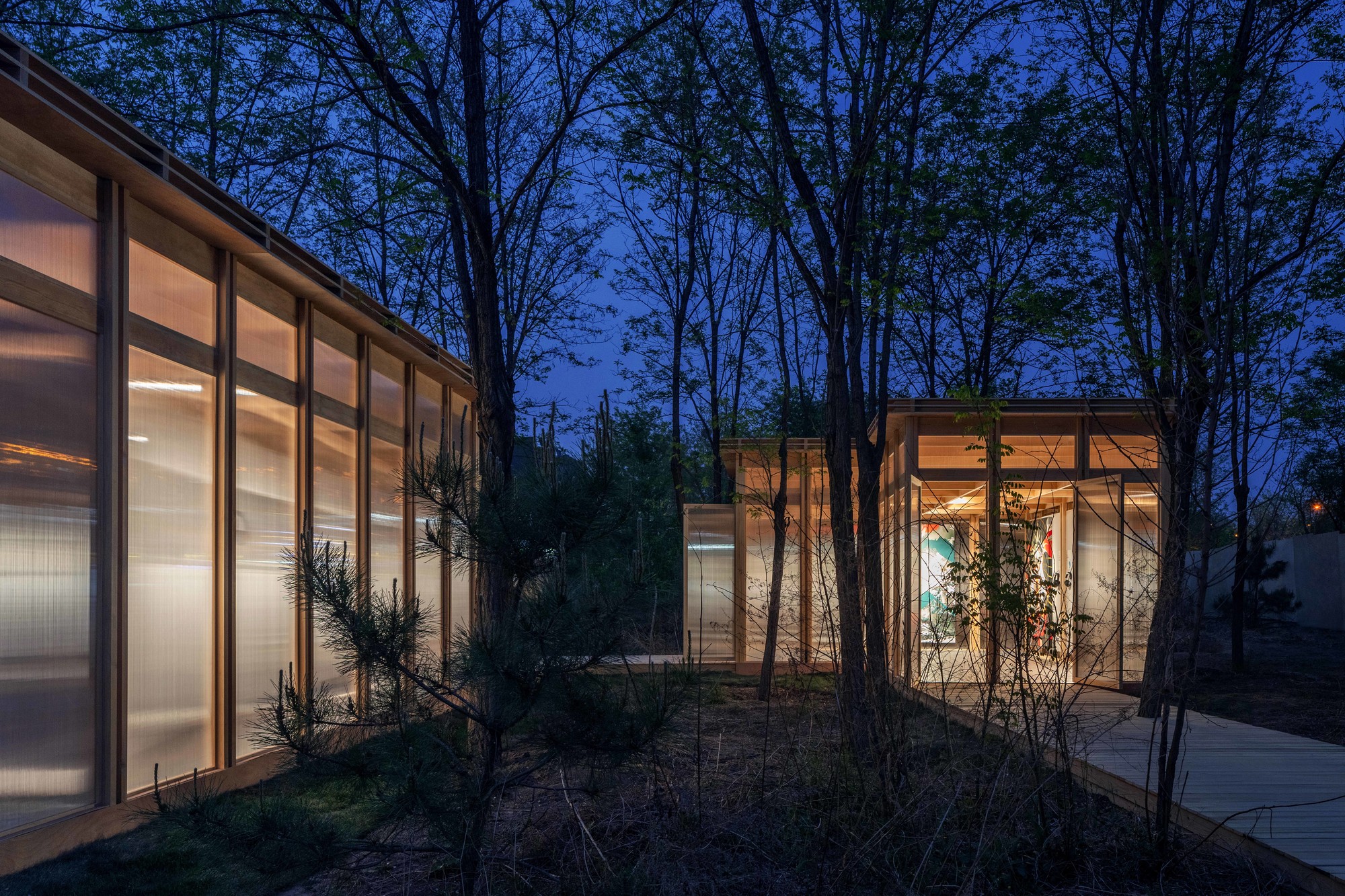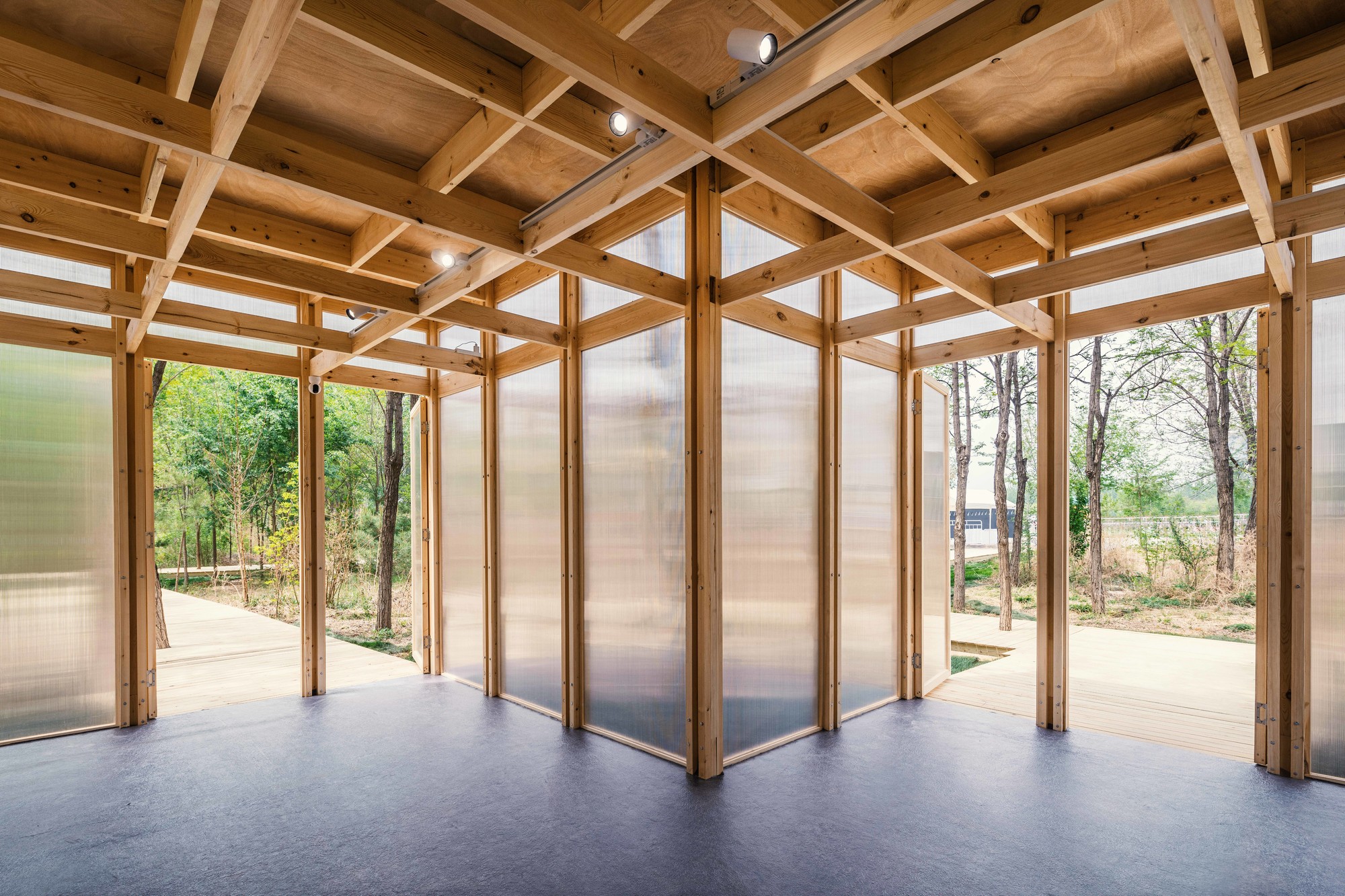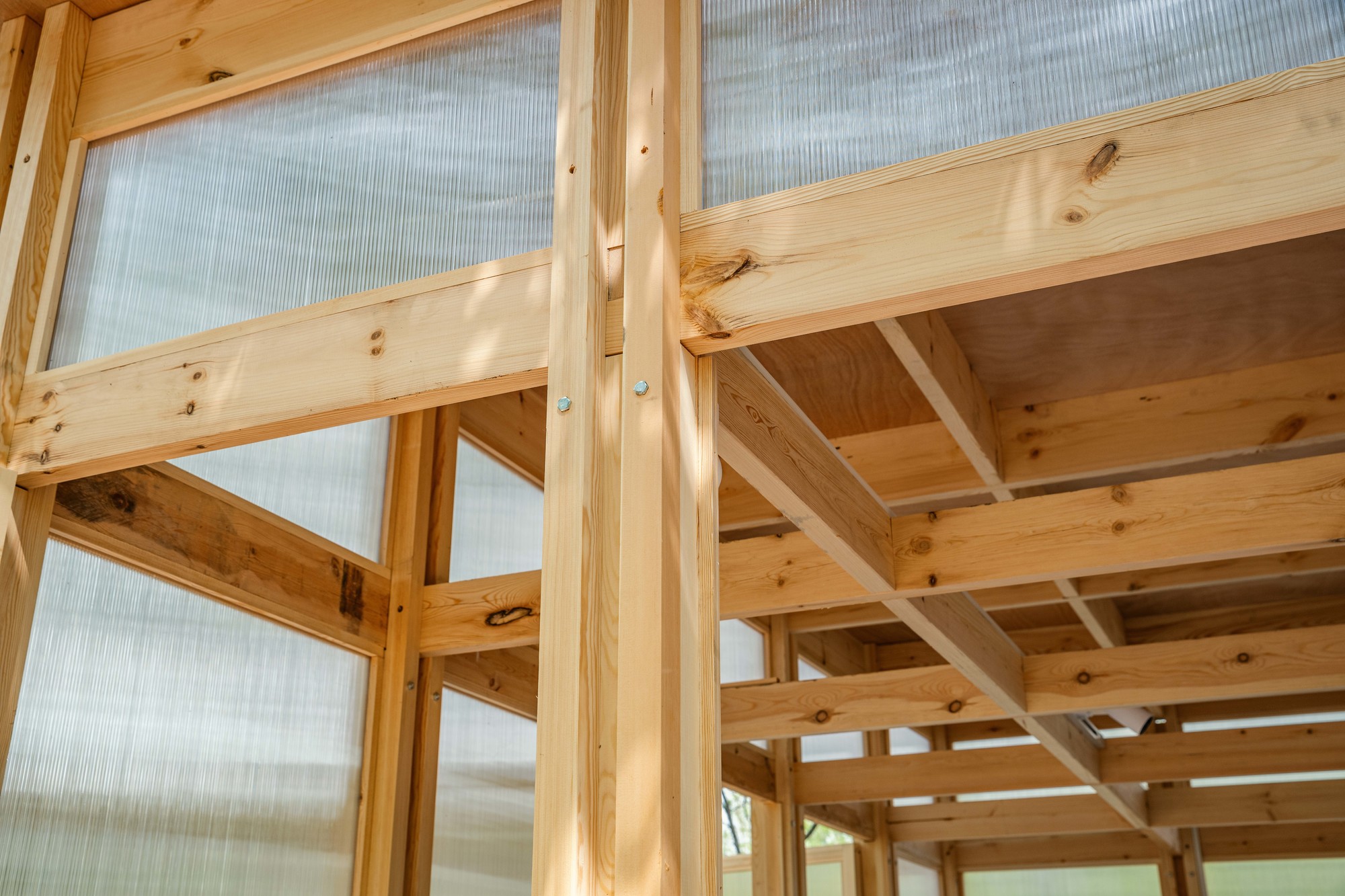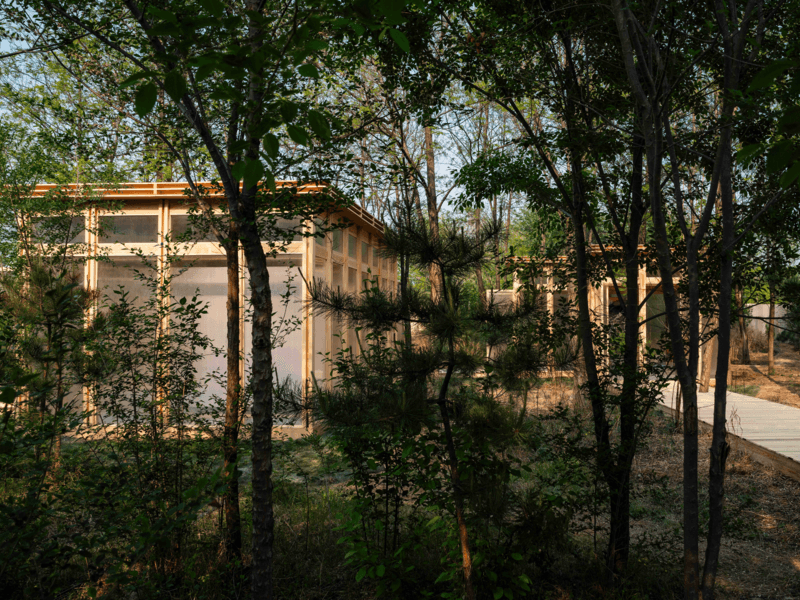
Day Scene Figure 1

Night view 1

Night view 2

Indoor Figure 1

Local
Museum of Everything: Innovative Design and Sustainable Development of Movable Art Museum
The All Things Art Museum is a movable art museum built on the scene of the music festival, which aims to provide the audience with a unique experience of art exhibition and live music. The museum breaks through the space limitations of traditional art museums and combines art, music and environment to create an interactive and dynamic exhibition space.
Advantages of modular design
The core concept of the Museum of Everything is modular design. All unit modules are factory prefabricated and can be quickly built into exhibition spaces in a short time. After the exhibition, the modules can be quickly removed and restored to their original condition for future reuse. This design greatly saves time, and significantly reduces the labor cost and overall cost of the construction and demolition process.
Through the modular design, the number of professional and technical workers required during the construction process is greatly reduced, reducing the dependence on high-skilled labor and further reducing construction costs. More importantly, the spatial layout of the modular art museum is flexible and can be adjusted according to the needs of different exhibitions, fully meeting the requirements of modern art exhibitions for diversity and flexibility.
Choice of sustainable materials
The Museum of Everything pays special attention to sustainability, mainly using renewable wood and polycarbonate panels, which are not only environmentally friendly, but also effectively reduce the carbon footprint. As a renewable resource, wood reduces the environmental burden; polycarbonate board has good light transmission, which can provide sufficient natural light for the exhibition space, and effectively insulates heat and reduces energy consumption.
The museum also uses finished metal connectors for structural connections, simplifying the construction process and improving efficiency. Metal connectors reduce the need for professional workers, reduce costs, and ensure the stability and safety of the museum.
Limitations and Solutions of Traditional Exhibition Space
Traditional exhibition space is often a one-time use, difficult to reuse, the value of space and materials has not been fully utilized. Through modular and detachable design, the Museum of Everything breaks this limitation and realizes the recycling of materials and space. After each exhibition, modules and materials can be disassembled, transported and reused. This efficient recycling method avoids waste of resources and improves the efficiency of exhibition space.
Practice the concept of sustainable development
The Museum of Everything is not only a low-cost, high-efficiency exhibition space solution, but also a practitioner of the concept of sustainable development. Through modular design, prefabricated components and the use of renewable materials, the Museum of Everything shows how to reduce construction costs while protecting the environment and using resources efficiently.
In general, the design of the Museum of Everything not only optimizes construction costs and construction efficiency, but also provides a flexible, environmentally friendly and sustainable solution for future exhibition spaces. It not only provides the audience with a multi-dimensional artistic experience, but also provides more possibilities for energy conservation, environmental protection and resource recycling for the exhibition space.
As an innovative movable exhibition space, the All Things Art Museum combines the needs of Chinese society for environmental protection and cultural development. First of all, in terms of environmental sustainability, the design of the Museum of Everything uses renewable wood and polycarbonate panels. These environmentally friendly materials not only reduce the consumption of natural resources, but also reduce carbon emissions in the construction process, which is in line with green development. The national strategy of energy conservation and emission reduction. The use of metal connectors also simplifies the construction process, improves efficiency, and further reduces the waste of resources in the construction process. Through this modular, low-carbon design, the Museum of Everything not only provides more possibilities for environmental protection, but also shows how to achieve efficient resource use at low cost.
From a cultural point of view, the design of the Art Museum of all things pays attention to the recycling of nature and resources in Chinese traditional culture, and emphasizes the concept of "harmony between man and nature" and harmonious coexistence. This modular and detachable design breaks the limitations of traditional fixed exhibition space and provides more adaptable space for different exhibition forms. This flexibility and reusable nature enhances the diversity of art exhibition spaces.
The N.O.A architecture studio was founded in 2021 by architect Wang Zhiyu. The name of the studio, N.O.A, represents the three cores of design, namely, N-Natural nature, O-Original simplicity and A- Adaptive adaptability.
First of all, the relationship between architecture and the natural environment is very important; secondly, the construction materials are taken from nature and used in nature, which will reduce the impact of industrial materials on the environment as much as possible; finally, adaptability, architecture should not only adapt to the environment, but also need to adapt to the people who use it.















